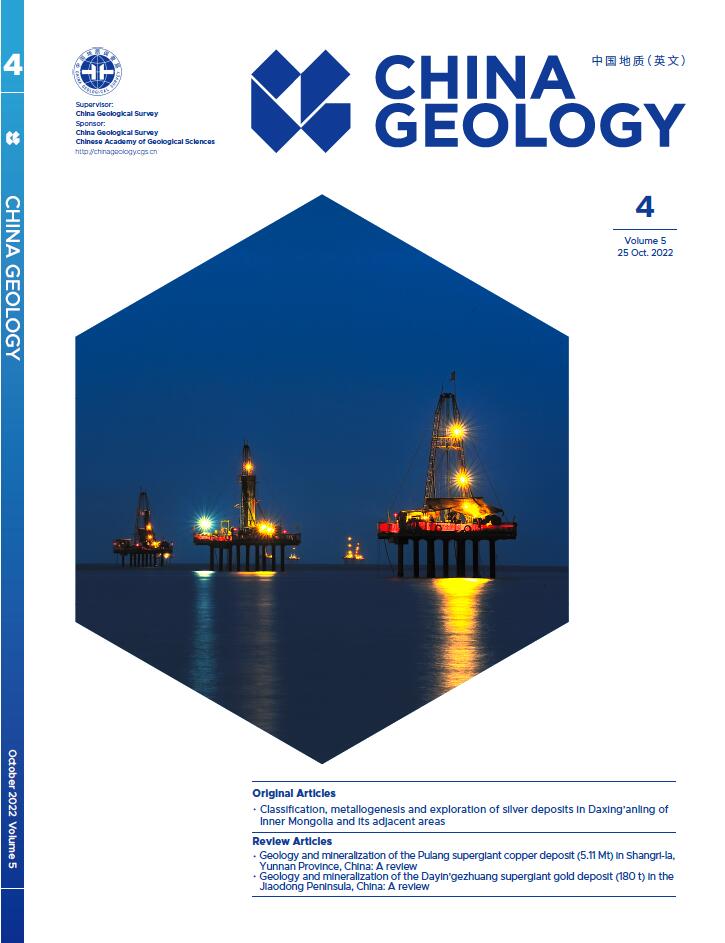| Citation: | Xin Wang, 2022. On the origin of outer integument, China Geology, 5, 777-778. doi: 10.31035/cg2022020 |
On the origin of outer integument
-

-
References
Dilcher DL, Crane PR. 1984. Archaeanthus: An early angiosperm from the Cenomanian of the Western Interior of North America. Annals of the Missouri Botanical Garden, 71(2), 351–383. doi: 10.2307/2399030. Eames AJ. 1961. Morphology of the angiosperms. New York, McGraw-Hill Book Company, Inc., 518. Endress PK. 2011. Angiosperm ovules: Diversity, development, evolution. Annals of Botany, 107(9), 1465–1489. doi: 10.1093/aob/mcr120. Friis EM, Pedersen KR, von Balthazar M, Grimm GW, Crane PR. 2009. Monetianthus mirus gen. et sp. nov., a nymphaealean flower from the Early Cretaceous of Portugal. International Journal of Plant Sciences, 170 (8), 1086‒1101. doi: 10.1086/605120. Herendeen PS, Friis EM, Pedersen KR, Crane PR. 2017. Palaeobotanical redux: Revisiting the age of the angiosperms. Nature Plants, 3, 17015. doi: 10.1038/nplants.2017.15. Ji Q, Li H, Bowe M, Liu Y, Taylor DW. 2004. Early Cretaceous Archaefructus eoflora sp. nov. with bisexual flowers from Beipiao, Western Liaoning, China. Acta Geologica Sinica (English edition), 78 (4), 883‒896. doi: 10.1111/j.1755-6724.2004.tb00210.x. Leng Q, Friis EM. 2003. Sinocarpus decussatus gen. et sp. nov. , a new angiosperm with basally syncarpous fruits from the Yixian Formation of Northeast China. Plant Systematics and Evolution, 241, 77‒88. doi: 10.1007/s00606-003-0028-8. Leng Q, Friis EM. 2006. Angiosperm leaves associated with Sinocarpus infructescences from the Yixian Formation (Mid-Early Cretaceous) of NE China. Plant Systematics and Evolution, 262 (3‒4), 173‒187. doi: 10.1007/s00606-006-0461-6. Lu AM, Tang YC. 2005. The Origin and Evolution of Primitive Angiosperms. Beijing, Science Press, 408 (in Chinese). Romanov MS, Dilcher DL. 2013. Fruit structure in Magnoliaceae s. l. and Archaeanthus and their relationships. American Journal of Botany, 100(8), 1494–1508. doi: 10.3732/ajb.1300035. Rothwell G. 1982. Cordaianthus duquesnensis sp. nov., anatomically preserved ovulate cones from the Upper Pennsylvanian of Ohio. American Journal of Botany, 69(2), 239‒247. doi: 10.1002/j.1537-2197.1982.tb13253.x. Shi G, Herrera F, Herendeen PS, Clark EG, Crane PR. 2021. Mesozoic cupules and the origin of the angiosperm second integument. Nature, 594, 223–226. doi: 10.1038/s41586-021-03598-w. Soltis DE. 2021. Seed for thought. Nature, 594, 185–186. doi: 10.1038/d41586-021-01347-7. Sun G, Dilcher DL, Zheng S, Zhou Z. 1998. In search of the first flower: A Jurassic angiosperm, Archaefructus, from Northeast China. Science, 282, 1692–1695. doi: 10.1126/science.282.5394.1692. Sun G, Ji Q, Dilcher DL, Zheng S, Nixon KC, Wang X. 2002. Archaefructaceae, a new basal angiosperm family. Science, 296, 899–904. doi: 10.1126/science.1069439. Tomlinson PB, Takaso T. 2002. Seed cone structure in conifers in relation to development and pollination: A biological approach. Canadian Journal of Botany, 80(12), 1250–1273. doi: 10.1139/b02-112. Wang X. 2018. The Dawn Angiosperms. Cham, Switzerland, Springer,407. Wang X. 2021. New observation on seed/ovule position in the fruit of Archaeanthus and its systematic implications. China Geology, 4, 752–755. doi: 10.31035/cg2021026. Wang X, Zheng XT. 2012. Reconsiderations on two characters of early angiosperm Archaefructus. Palaeoworld, 21 (3–4), 193‒201. doi: 10.1016/j.palwor.2012.10.002. -
Access History

-
Figure 1.
Ovule of Cordaianthus duquesnensis, with inner (i) and outer (o) integuments. Specimen 2766, deposited in Field Museum of Nature History. Reproduced from Wang X (2018).





 DownLoad:
DownLoad: